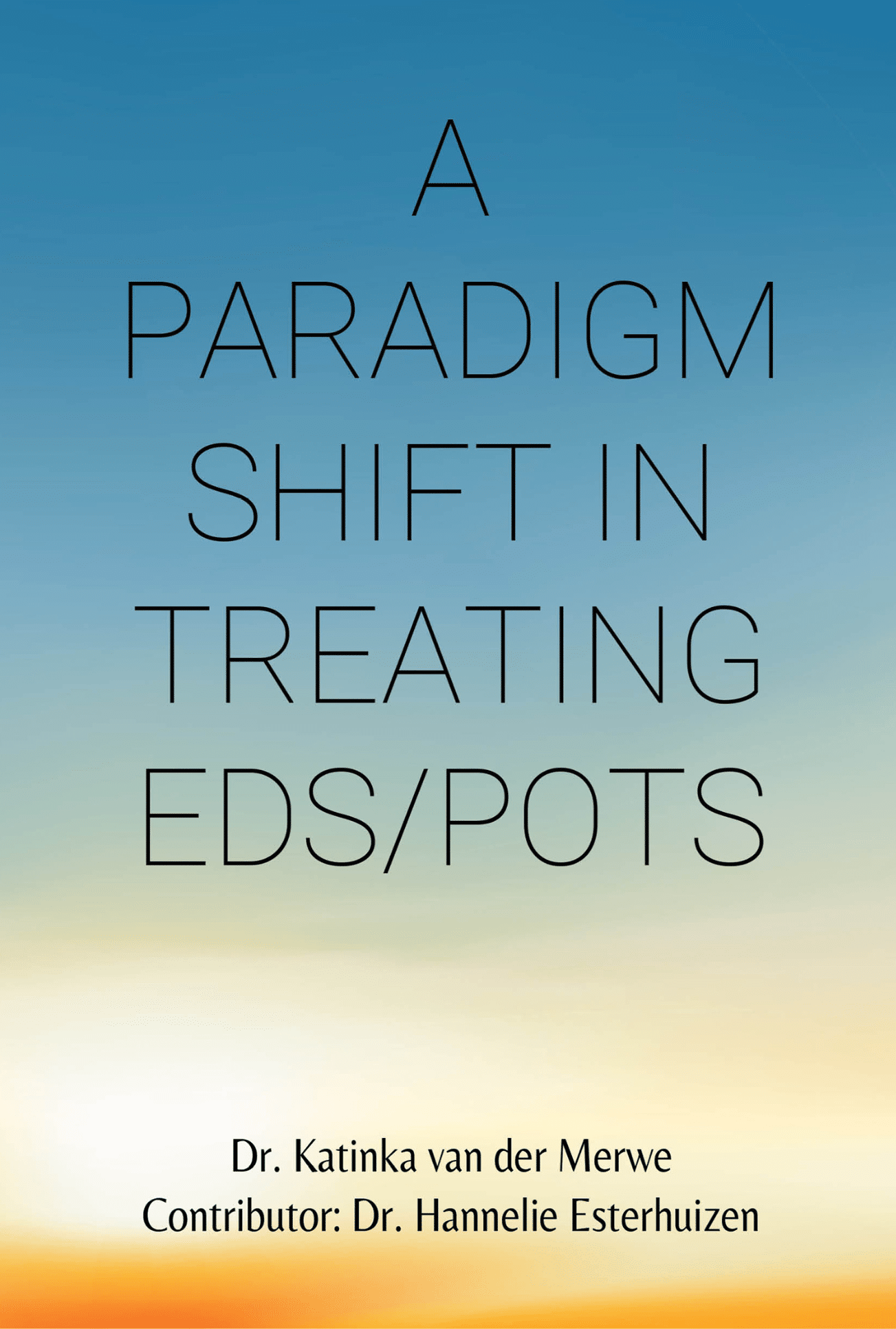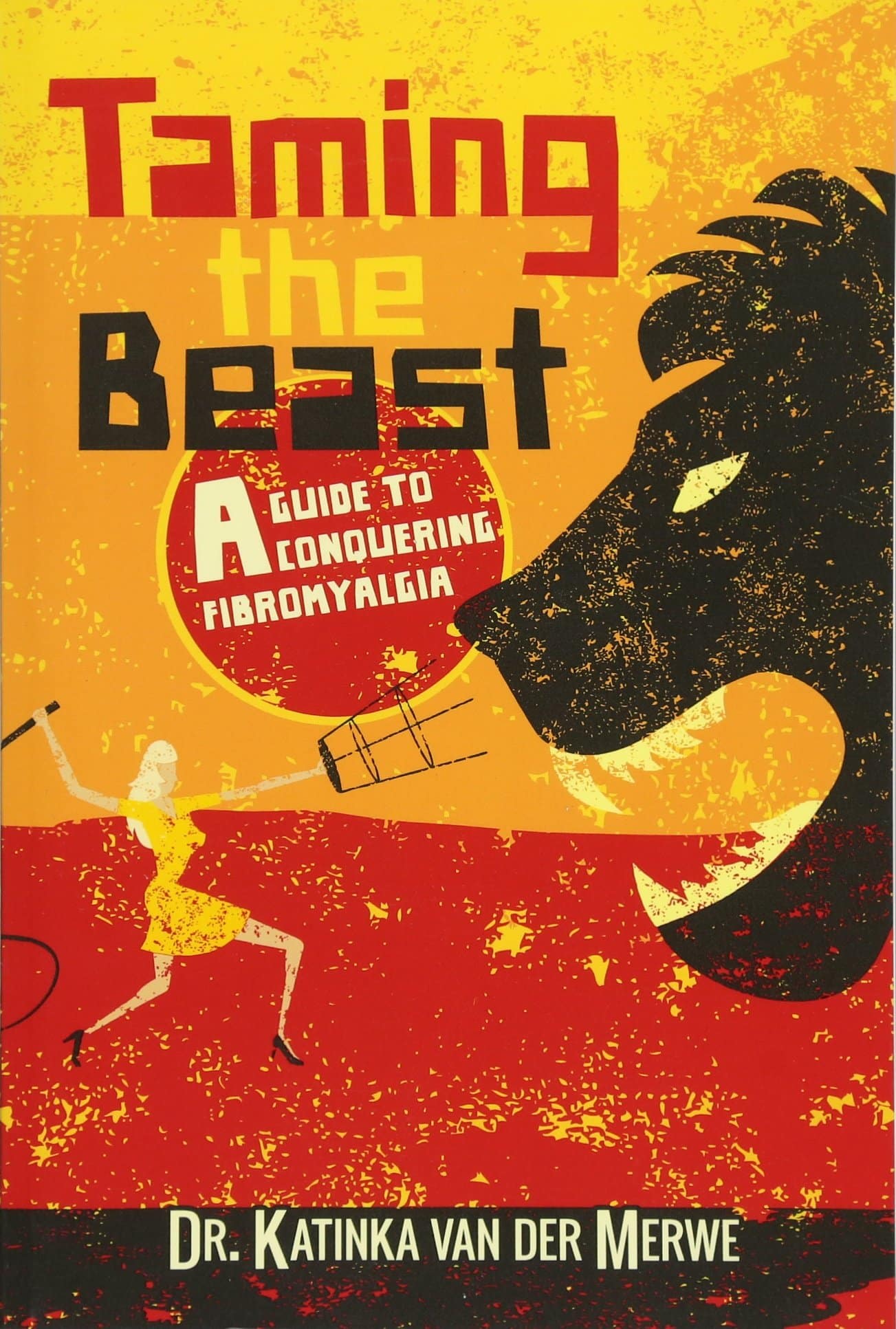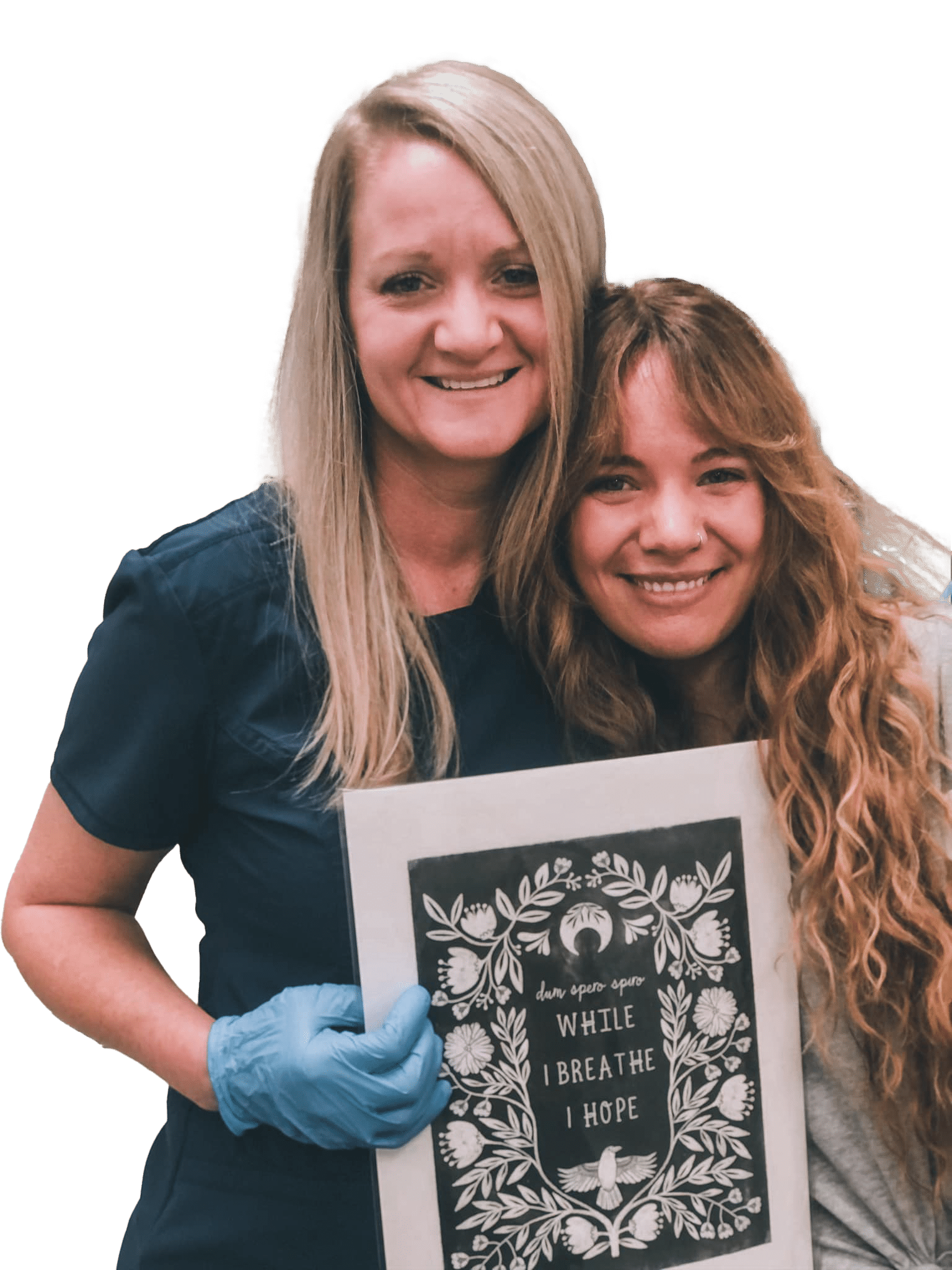Every single thing you eat or drink either contributes to, or takes away from your health. Is your diet robbing you from a long healthy life? Nutrition has become a hot button topic in today’s world. However, it can be a really difficult field to navigate, because there are so many opposing schools of thought. Can I eat tomatoes? Can I eat carbs? What are short chain fatty acids? Rather than picking one school of thought, Dr. Katinka van der Merwe is taking a practical and simple approach in this latest podcast, that you can start implementing right away. She discusses the best way of restoring nerve supply to the gut, healing the gut, and which general types of food to focus on.
Hi, everyone. Welcome to the hope for chronic pain podcast. This podcast is brought to you by Dr. Katinka Van Der Merwe. Dr. Katinka grew up in Johannesburg, South Africa as the daughter of a successful chiropractic doctor. She followed in her father’s footsteps and graduated from Parker College of Chiropractic in 1999. She has since gained a reputation for developing a novel non-invasive treatment system for neurologic rehabilitation of chronic pain, resulting in breakthroughs for even the most hopeless and severe cases. She and her team have gained international attention due to their unprecedented success rates in these cases. Kent State University is slated to be involved with the first study of her work starting this year. She is an international speaker and bestselling author of three books. Putting out the Fire, Taming the Beast and Wakeup: Miracles of Healing from Around the World, Dr. Katinka practices in Fayetteville, Arkansas, and as a CEO of The Spero Clinic.
Hi, and welcome to my podcast today! It’s so good to be able to connect with you and I’m excited to talk about diet because that is probably one of the most requested topics that we have had. Thomas Edison said that “the doctor of the future will no longer treat the human frame with drugs, but rather will cure and prevent disease with nutrition.” We often tend to take our bodies for granted. The majority of the public tends to eat what they want, drink what they want, and think what they want, not thinking of the results of their choices until the bad choices they make deliver symptoms painful or uncomfortable enough to demand the questioning of those earlier choices. In addition, it is more affordable, more convenient, and requires less effort to eat fast food on the go and eat for convenience rather than health. I’m a mom of four kids, and I know how difficult it is running between softball and baseball practices and school, and with standard temptation, just to stop a Chick-fil-A rather than to have to plan your meals and go home and cook. The average American adult eats 1,996 pounds of food per year. That is roughly how much a black rhinoceros weighs, think about that. We get to choose where we eat and how much we eat and after that, we lose all control of what happens to the food we just swallowed. We lose control over the effects these foods will have on our health. Each morsel we eat either add to or subtract from our health. It is estimated that an individual consumes 140 to 150 pounds of food additives each year. So, the average person consumes five pounds of synthetic additives in total each year. Food additives are artificial ingredients that are added to foods, medications, and cosmetics in order to enhance the flavor, color, and texture and facilitate in preparation and prevent spoiling. The most common food additives or aspartame, BHA, and BHT, monosodium glutamate as we know, MSG, sodium nitrate, paraben sulfates, and tartrazine or yellow dye 5. If you look closely, you will see it in almost everything. Now, if you include sugar in that data, as it’s the most frequently used additive by the food industry, then that number increases to a whopping hundred and thirty-five pounds a year. So, Michael Pollan has a great saying, and it goes, “If it came from a plant eat it, if it was made in a plant don’t.” Is it any surprise that the food and beverages we consume are making us sick? Any system can only be stressed and abused for so long before breaking down. That process of our GI tracts breaking down results in inevitable symptoms. One of the most common symptoms we encounter is gastrointestinal dysfunction. The majority of chronic pain patients also suffer from GI dysfunction of varying degrees, including food sensitivities, constipation, leaky gut, nausea, food allergies, and gastroparesis. A recently published study in the American journal of gastroenterology found that the burden of gastrointestinal, liver, and pancreatic diseases in the US is staggering, as they are substantial sources of death and cost. Each year, these conditions account for 105 million doctor visits, 14 million hospital admissions, to 136,000 deaths, and $142 billion in total costs. With an aging population, the prevalence of digestive diseases is expected to only grow over time. Richard Dawkins once said “It is possible in medicine, even when you intend to do good to do harm instead.” That is why science thrives on actively encouraging criticism rather than stifling it. It has become fairly common in the developed world to accept that aging includes having GI symptoms. Heartburn is common, eating unhealthy as convenient and easy as I said earlier, and eating healthy is complicated and expensive. Obesity is widely accepted, and it has even become normal for store mannequins to be overweight. To point out that extra weight hurts your health in today’s day and age is considered to be politically incorrect, and while it is true that how we look on the outside does not make us less worthy or less than in any way than our slimmer counterparts, it’s an indisputable fact that obesity shaves good health and quality years of our lives. What do we do when our digestive system starts to display unpleasant side effects? We inevitably turn to medicine. A new 2019 study suggests that people who use common heartburn drugs for months to years may face heightened risks of dying from heart disease, kidney failure, or stomach cancer. The study included more than 200,000 US veterans. It’s the latest to raise concerns over drugs called proton pump inhibitors or PPIs. They include prescription and over-the-counter drugs like Prilosec, Prevacid, and Nexium. I think we all know these names and they rank among the top-selling medications in the United States. Its multibillion-dollar industry. Research in recent years has linked prolonged PPI use to increased the risk of various diseases and premature death.
Proton pump inhibitors are amongst the most prescribed medications in the whole world due to their effectiveness and safety profile. We’re basically popping them like skittles. However, additional doubts have arisen about its safety and long-term use and have been associated with an increased risk of developing gastric cancer. Likewise, drugs that help to relieve constipation, such as Metamucil, pack their own long list of side effects. Even drugs like baby aspirin have been shown to be associated with increased risk of major gastrointestinal bleeding. A recent large analysis found an approximately two-fold higher risk of GI bleeding among individuals regularly using aspirin compared to placebo. So, if your diet has been less than perfect or you’re experiencing unwelcomed GI symptoms, where do you begin? How do you fix it? And how do you heal your gut? While there are many schools of thought about which types of diets are best, this podcast will not address those.
We will not address vegetarianism versus keto or any other specific lifestyles. I wanted to simplify it today, and so rather I’m going to address some practical advice and helpful tips to help you heal your gut. We treat some of the sickest chronic pain patients in the world. Almost universally, these patients present with some degree of GI dysfunction. Some patients only suffer from indigestion, constipation, or abdominal pain, but many suffer from gastroparesis, a condition that causes almost complete paralysis of the GI tract, and the necessity of placement of feeding tubes, port, or PICC lines to stay alive. If these severe conditions can heal, I believe that most GI conditions can heal by changing your habits and giving your GI tract some tender loving care. Let’s talk about some basic concepts and keep in mind that I’m discussing what has worked for my patients. My advice should not replace the advice of your personal regular physician.
Let’s dive in! The nervous system’s role: The vagus nerve is one of the cranial nerves exiting your brain. It is a large nerve that is part of some exciting modern research in healthcare. It controls inflammation and also your immune system. In my opinion, this is one of the most exciting nerves inside your body. The vagus nerve helps manage the complex processes in your digestive tract, including signaling the muscles in your stomach to contract and push food into the small intestine. A damaged vagus nerve cannot send signals normally to your stomach muscles. Now the Vagus nerve, if you looked at an image of it, looks like a tree with many tiny branches, and these branches are in touch with almost every single organ in your abdominal cavity, including your bladder. In addition, it is increasingly becoming more clear that this nerve may act as a ladder between the gut and the brain. Evidence from recent studies strongly suggest the link between the gut and the GI system and Parkinson’s disease, for example. It is also emerging that viruses such as the Epstein-Barr virus that causes mono may infect the vagus nerve and cause havoc in the central nervous system and brain. The gut is a likely origin of pockets of destructive viral and bacterial infections. It’s a drawbridge and your defense system that was left open, and now the enemy can get to your nervous system and your brain. One way to prevent this from happening is to stimulate the vagus nerve daily. While we use manual vagus nerve stimulation in our office, I understand that not everyone listening to this podcast can come to my office in Arkansas. And so, we therefore suggest manual vagus nerve stimulation at home. I recently came across a device that I now personally use because I don’t have a doctor available every day to do manual vagus nerve stimulation for me. This device is something I’m very excited about, we have tested it in practice and tested it on our most severe patients and I’m here to tell you that I think that it works. The company is manufacturing a simple and effective home device. And this device is called the Rezzimax (REZZIMAX) and may be ordered at rezzimax.com. I believe it’s $499, but it’s one of the best investments you will ever make for your health. If you use the coupon, Spero (SPERO). You will receive $100 off your device. Next, let’s discuss a leaky gut. Inside our abdomen, we have a thin, extensive intestinal lining covering more than 4,000 square feet of surface area. When working properly, it forms a tight barrier that rigidly controls what gets absorbed into the bloodstream. However, an unhealthy gut lining may have large cracks or holes allowing partially digested food, toxins, and bugs to penetrate the tissues beneath it.
This may trigger inflammation and changes in the gut flora or your good normal bacteria that could lead to problems within the digestive tract and beyond. One of the best holistic products that I recommend to heal your GI lining is a product called “Restore” by Dr. Zach Bush and it is available on Amazon. I would suggest that you use this product for at least six months, but really it is a great daily investment to make to your health, to ensure that your gut lining stays healthy and food particles stay in the area where it’s supposed to stay. Oregon grape by Nature’s Way is another great supplement used to decrease inflammation. This brings us to food sensitivities. The difference between a food allergy and sensitivity is the body’s response to it. When you have a food allergy, your immune system causes the reaction. If you have a food sensitivity or intolerance, the reaction is triggered by the digestive system.
Food sensitivities may overtime turn into food allergies. How do we develop these? So, we talked about those holes or cracks in your digestive lining, right? When you eat food every day and you have those cracks in the lining food particles are normally too big to enter the blood. Now enter the blood through what we could call the back door. It’s an abnormal entrance into the bloodstream. And since your immune system does not know what to do with these food particles, because they don’t recognize them, they now become sensitive to the foods that you like to eat every day. And this can happen with even healthy foods. For example, when I did my food sensitivity test, I found that I was very sensitive to chickpeas, something that I like to eat all the time. So, what do you do when food that you love to eat has leaked into your blood and as a result, caused your body to dislike it resulting in inflammation? We recommend an IgG food sensitivity test. After you have figured out which foods you are sensitive to, completely avoid those foods for six months after which time, one at a time, may be added back to your diet. How do you know if you’re still sensitive to it? An easy test to do is to weigh yourself every day. If you seem to all of a sudden gain a pound or more immediately after reintroducing this food, your body is probably still being inflamed by it and retaining fluid because of it. So, you’re not ready for it. Trust me, it’s a small price to pay, to feel like a new and a whole human being again. Last, we should discuss the pH of foods. The pH level of food determines a food’s acidity or alkalinity and it’s measured on a scale of zero to 14. The lower the pH, the more acidic the solution, the higher the pH, the more alkaline or base the solution.
When a solution is about in the middle of the range, neither acid nor alkaline, it has a neutral pH of seven. The body is alkaline by design and acid in function. The body regulates pH in a very narrow range in the different organs throughout the body. Finely tuned physiological systems constantly work to keep the pH within specific ranges for optimal function. Stomach acid, which is important for healthy digestion and as a protection against potential infections, has a low pH of about two to three. When the pH of your stomach cannot get low enough, it causes problems with digestion and can create acid reflux, and that’s kind of weird because most people have medical approaches to acid reflux, and assume that there’s too much acid. When in fact, the vast majority of the time, the problem might actually be too little acid. Blood is kept at a neutral pH between 7.35 and 7.45.
When your blood becomes too acidic, fine-tuned physiological mechanisms kick in to readjust the pH to an optimal level. One way it does this is by stealing calcium from your bones. Over many years, this may contribute to developing osteoporosis. This is actually a big argument in those people who claim that the pH hypothesis is nonsense. They say that it’s not possible, because the body does have such rigid control over the pH levels of each system like the blood, but at what price? The body has a reserve that it draws on like calcium to make sure that your blood and other bodily fluids remain at a certain pH. So, it’s like Peter robbing Paul, there is a price to pay for eating acidic foods. Cancer, and other disease processes thrive in an acidic environment. Bad bacteria prefer an acidic environment. So really, you’re creating an unhealthy environment with your diet for disease to thrive.
The Western diet is composed of acidic foods, such as protein cereals, sugars, and processed foods. Processed foods are highly acidic and almost completely stripped of their nutrients. The opposite of acidic foods are alkaline foods, and in the Western diet, alkaline foods such as vegetables are eaten in much smaller quantities and their alkaline content is insufficient to neutralize surplus assets. As a rule of thumb, fruits and vegetables have an alkaline effect in the body. This even includes lemons! While we think of lemons as being acidic, it has an alkaline effect on the body. All animal products, processed foods, dairy other sugary drinks have an acidic effect on the body. 75% of your daily diet should consist of alkaline food. That is, if you want to live a long, healthy life.
So, there you have it: a simple, although not always easy recipe to heal your gut and eat your way back to health. Restore proper nerve supply to the gut, heal the gut, avoid foods you are sensitive to for at least for six months, and eat healthy and whole alkaline foods. I want to repeat: This is simple, but I understand that it is not easy. Few things in life worth having come to us in an easy fashion, but easy is for lazy people. Easy is for people who wait to become a victim of their poor choices in health, and then frantically try to numb the symptoms arising from these poor decisions. Living proactively means that you are lovingly investing into the most single important factor determining your quality of life: your health. Josh Billings said “Health is like money. We never have a true idea of its value until we lose it.” Stay safe and healthy and make good conscious decisions for your health – until next time.
Thank you so much for joining us today. We are excited about every new person we are able to reach. It is our most sincere hope that our podcast will bring hope to many. If you or someone you love is suffering from chronic pain, please don’t lose hope. Visit our website at www.thesperoclinic.com for more information and stories of hope.




Start your patient journey with the Spero Clinic's neurologic rehabilitation program.
